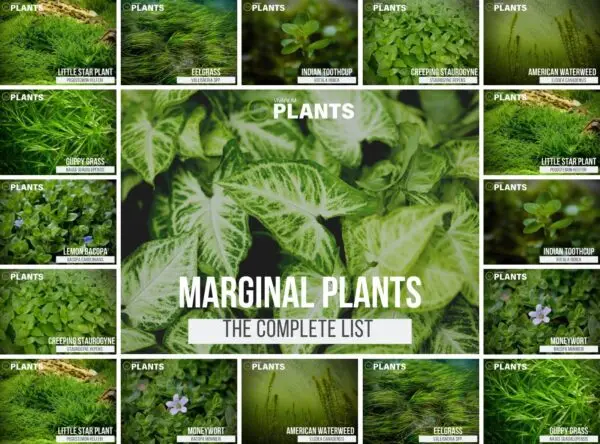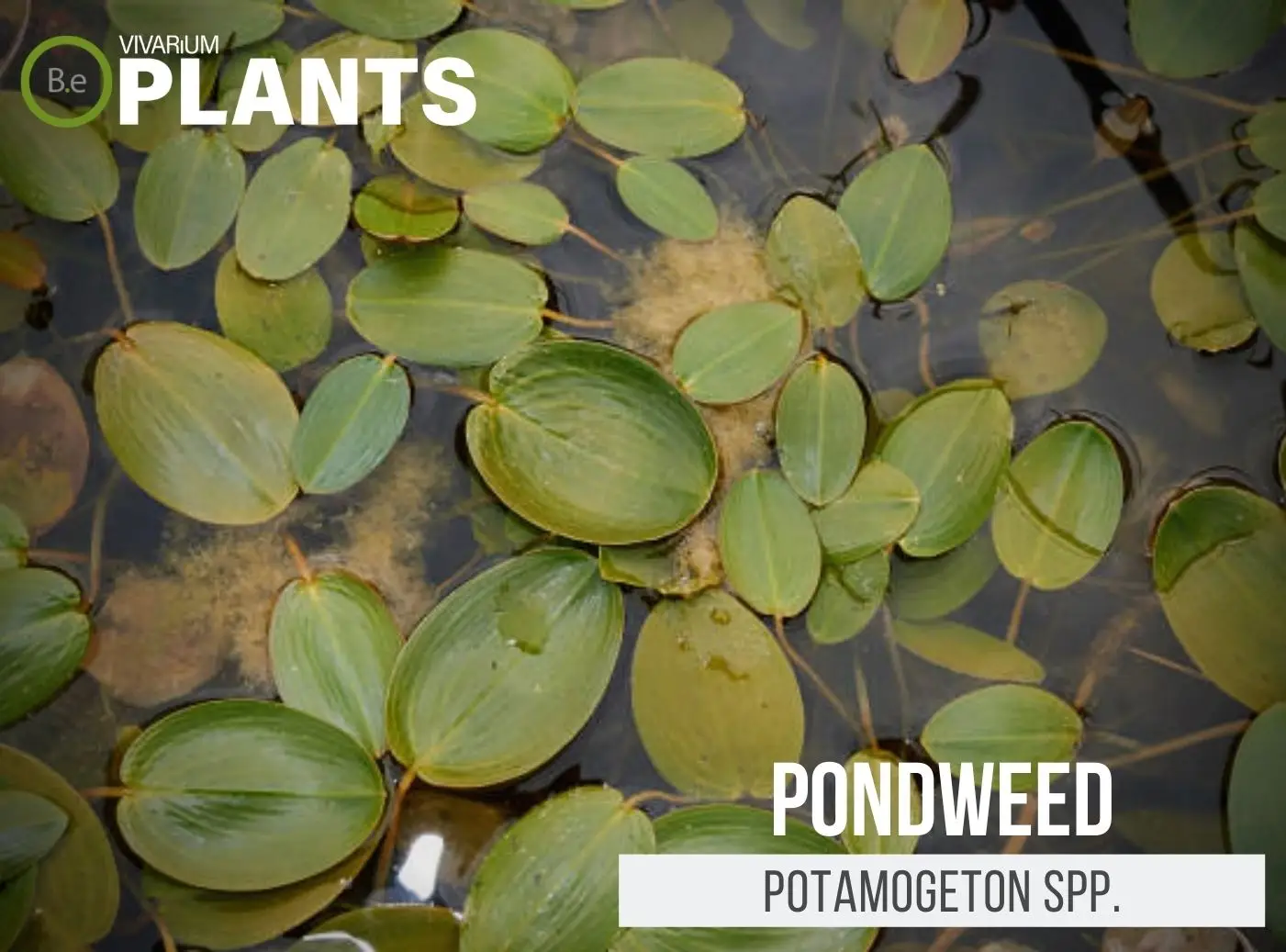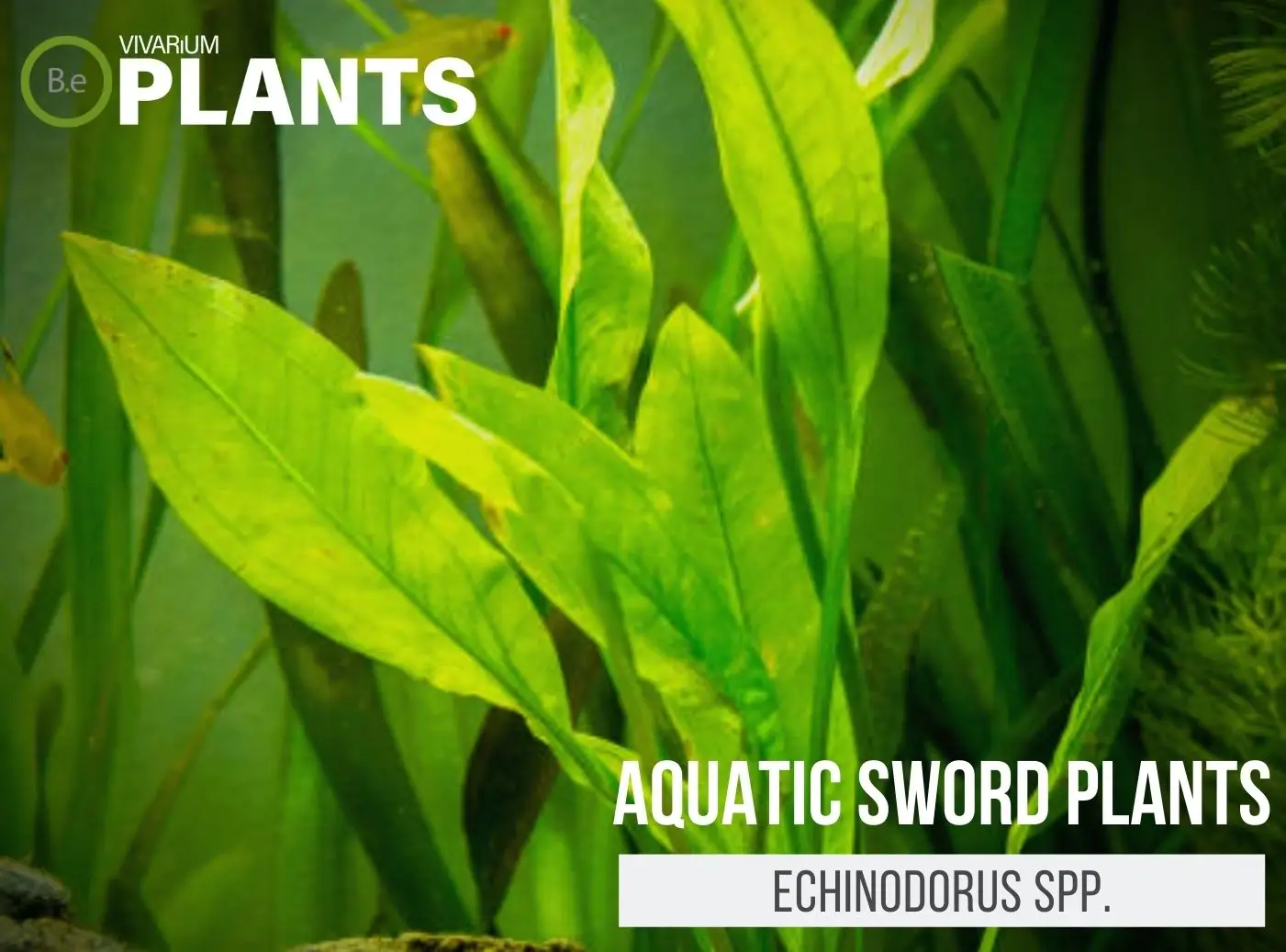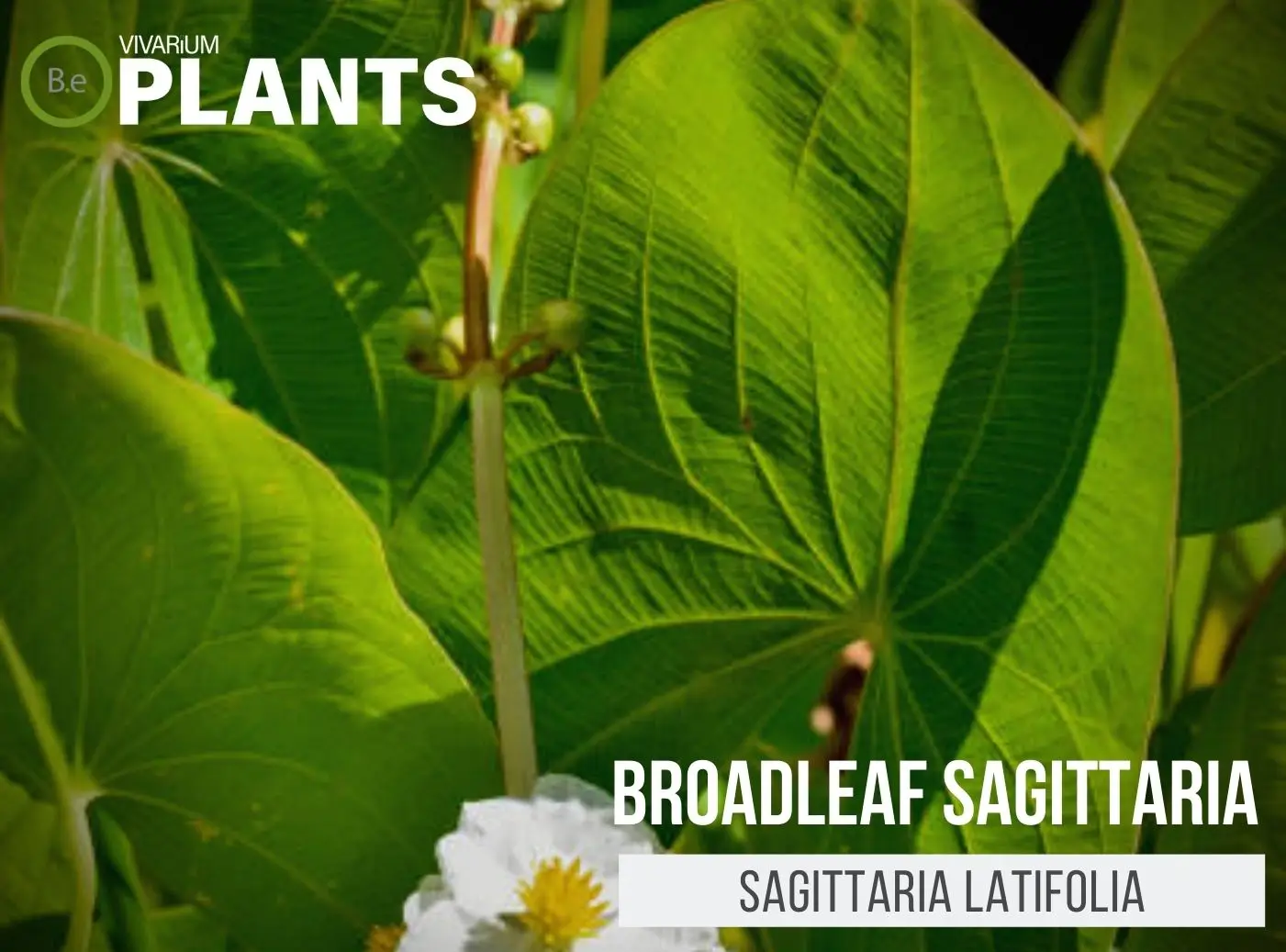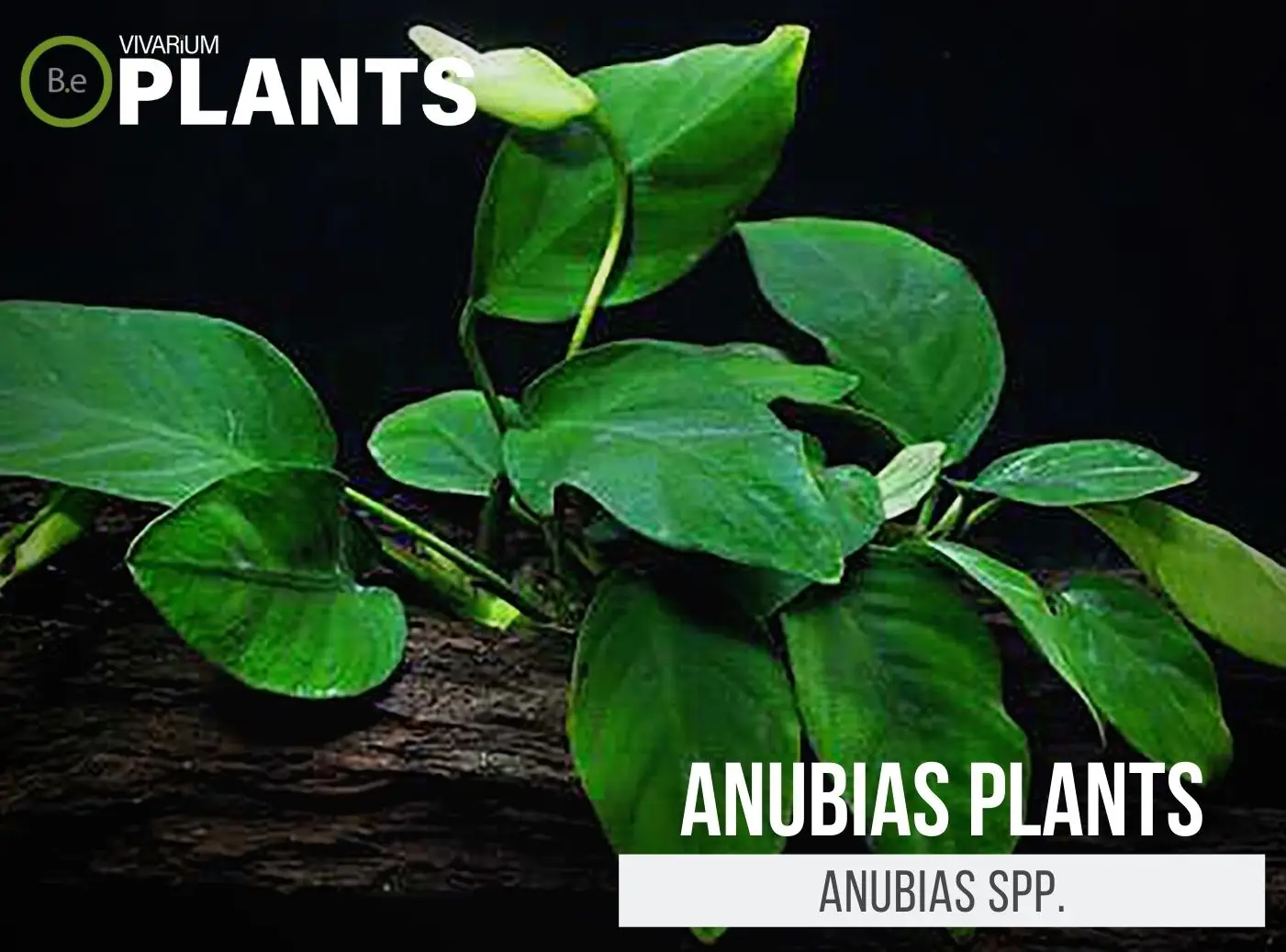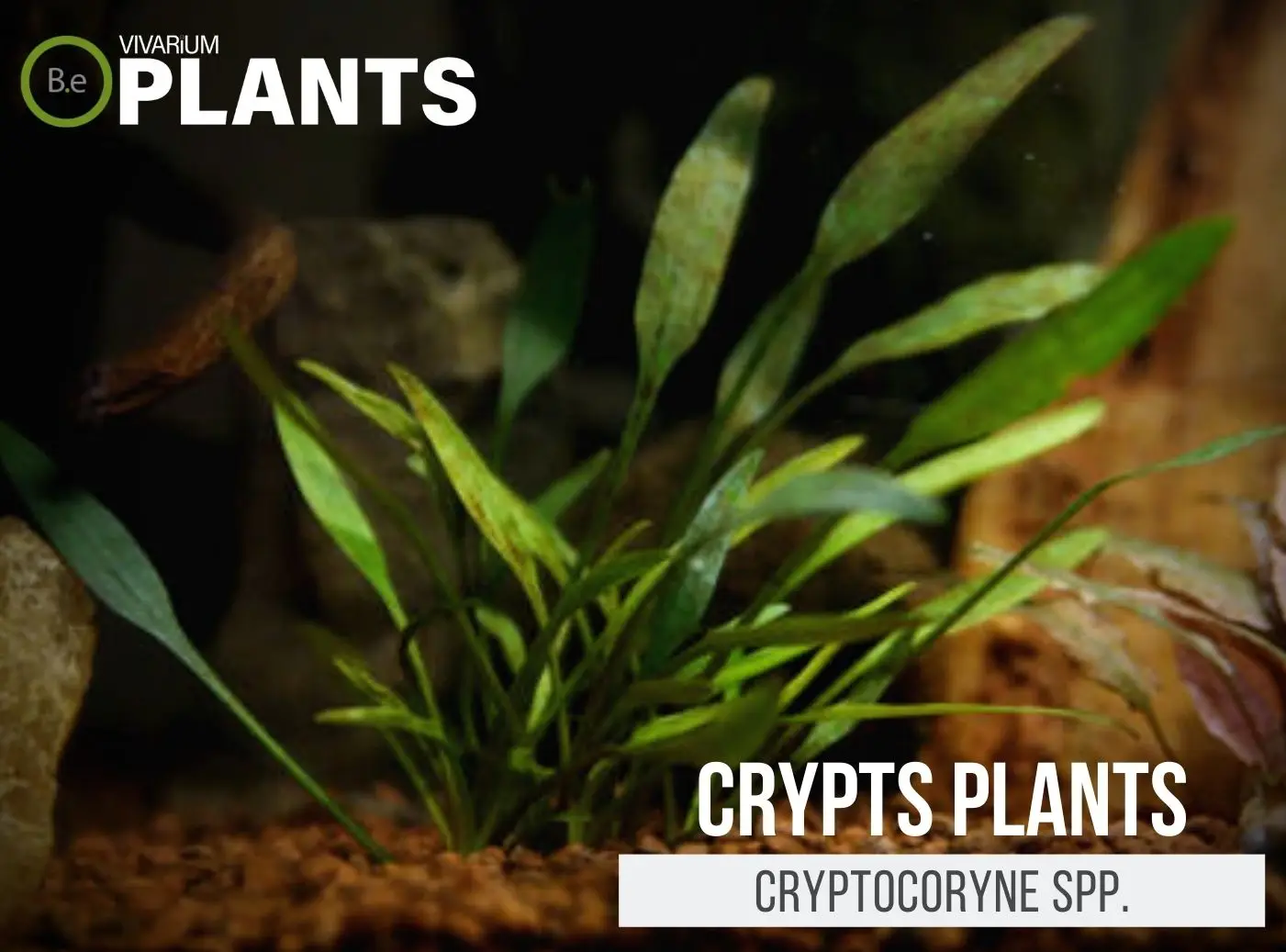Keeping your aquarium in its best shape is essential if you want to enjoy its beauty to the fullest.
One way of improving the aesthetics of your aquarium is by adding marginal plants.
In this article, you’ll learn more about why these types of plants also make ideal paludarium plants and riparium plants.
We will also touch on their benefits, the best types for your aquarium, and how to properly care for them.
Read on to find out more about marginal plants for your vivarium and how they can improve your aquatic environment.
What Are Marginal Plants?
Marginal plants, also known as semi-aquatic plants, are a type of plant that grows both in and out of water.
These plants typically grow in shallow water and prefer moist soil such as wet mud or sand.
They have adapted to survive in both aquatic and terrestrial environments, and are known for having strong root systems, which anchor them to the substrate.
The Difference Between Marginal Plants & Fully Aquatic Plants
Marginal plants are plants that are adapted to survive in both terrestrial and aquatic environments, while fully aquatic plants are plants that grow exclusively underwater.
Semi-aquatic plants thrive in environments that are moist, with either a mixture of water and soil or with consistently damp soil.
Marginal plants typically live on the borders of wetlands, near rivers, lakes, or ponds.
These plants provide food, shelter, and nutrition for aquatic species.
They are usually larger in size and often have scaled leaves, long stems, and modified root systems.
These plants are also sturdy, and able to withstand fluctuating water levels and muddy lakes or riverbeds.
Fully aquatic plants, such as those used in aquariums, require a more consistent environment.
These plants have specially adapted root systems that enable them to extract oxygen from the water and are typically smaller in size.
These plants require careful planting, and regular water changes and fertilization to stay healthy and vibrant.


Benefits of Adding Marginal Plants to Your Aquarium
Aquariums are a great way to bring a touch of nature to your home.
Adding marginal plants to your aquarium provides a range of beneficial features.
This includes improved water quality, additional oxygen to your fish, and even aesthetic improvements.
Additional Oxygen
Semi-aquatic plants are beneficial for aquatic setups as they provide additional oxygen for fish and invertebrates.
The aquatic plants absorb carbon dioxide and release oxygen through photosynthesis, increasing the oxygen levels in the water.
This oxygen exchange promotes healthy aquatic life and maintains stability in the aquarium’s environment.
The addition of underwater plant life also helps to reduce nitrogen levels, further aiding in keeping the vivarium oxygen-rich.
Improved Water Quality
Semi-aquatic plants help to improve water quality in several ways.
Firstly, being partially submerged, the roots of these plants take up nutrients from the water and improve their quality by removing toxins that could be detrimental to the health of the fish.
Secondly, when planted in the substrate, marginal plants help reduce the amount of accumulated debris, as soil and debris that gets stirred up by waves are trapped by the roots of the plants.
Improved Aesthetics
Semi-aquatic plants bring beauty and a variety of textures to your aquarium.
With a range of colors, shapes, and sizes, marginal plants are able to provide a visually pleasing look, whether planted on the substrate or attached to rocks, driftwood, and other decoration.
Additionally, some plants, such as Sagittaria latifolia (Broadleaf Sagittaria) and Cryptocoryne spp. (Crypts) produce parasol-like leaves that can shade aquarium inhabitants from harsh aquarium lights.
These plants also act as a hiding place for aquarium fish and invertebrates, providing them with an area to retreat if they are feeling stressed.
Best Marginal Plants for Ponds & Aquariums
When choosing marginal plants for ponds, aquariums, paludariums, or even ripariums, it’s important to do your research and select plants that will suit your particular setup, chemistry, and light level.
It is recommended to provide these plants with appropriate light and nutrition and to keep an eye on water chemistry and temperature.
With proper care, these semi-aquatic plants can bring your aquarium to life with rich colors and texture.
Potamogeton spp. (Pondweed)
Potamogeton spp. (Pondweed) is a unique marginal plant for aquariums that provides a refreshing lush green look for your tank.
It is a type of long-stemmed named after the Greek word for “river” and thrives in the shallow parts of lakes, ponds, and even along slow-moving streams.
Under the right conditions, it grows glossy, green foliage that appears fan-shaped or feathery, with small, pen-shaped flowers emerging from within.
The Potamogeton spp. is known for its strong stem and lateral root system, giving it a floating effect as it grows.
Like many other semi-aquatic plants, it does not require any additional fertilizers in order to thrive in aquariums.
With its floating foliage and unique root structure, pondweed is a popular choice for aquarium owners looking to add a unique aquatic flair to their space.
Here’s a complete guide on caring for the Pondweed (Potamogeton spp.).
Echinodorus spp. (Sword Plants)
Echinodorus spp. (Sword Plants) is one of the most popular marginal plants for vivariums.
These plants have long, grass-like leaves with pointed tips and are often found in a variety of vibrant colors ranging from green to red.
The Sword Plant is unique because it not only provides aesthetic benefits to aquariums but also helps to reduce nitrates and provide shelter for fish.
Plus, this variety of plants propagates quickly and easily, making it a great choice for seasoned aquatic gardeners.
Here’s a complete guide on caring for the Sword Plants (Echinodorus spp.).
Lobelia cardinalis (Cardinal Plants)
Lobelia cardinalis (Cardinal Plants) is a semi-aquatic plant that thrives in both underwater and partially submerged environments.
It is a small, herbaceous perennial plant with attractive red and green foliage.
This plant is unique in that its leaves remain submerged underwater while its flowers are displayed just above the water line.
The lobelia’s bright red flowers will provide contrast to a water-based environment and are a popular choice among beginner and experienced aquarium owners alike.
With the right conditions and care, this marginal plant can be very rewarding in the home aquarium.
Here’s a complete guide on caring for the Cardinal Plants (Lobelia cardinalis).
Sagittaria latifolia (Broadleaf Sagittaria)
Sagittaria latifolia, also known as Broadleaf Sagittaria, is a great semi-aquatic plant for aquariums.
This hardy, evergreen plant has long, wide leaves with a deeply serrated edge that gives it a unique look.
It is also very resilient to stress and easy to propagate, making it an ideal choice for beginners or those without a lot of time to dedicate to their aquarium.
It requires moderate lighting and a nutrient-rich substrate, and like other marginal plants, it should be partially submerged in water.
It can reach a maximum height of up to 30cm, so it is suited for larger aquariums.
Broadleaf Sagittaria is a beautiful addition to any aquarium, and its unique shape and color make it stand out from other marginal plants.
Here’s a complete guide on caring for the Broadleaf Sagittaria (Sagittaria latifolia).
Anubias spp. (Anubias)
Anubias spp. (Anubias) is a type of marginal plant that is great for aquariums as it requires very little maintenance.
As a rooted plant, it has broad, short, arrowhead-shaped foliage, making it distinct from other semi-aquatic plants.
Anubias spp. is very versatile and can withstand a range of water temperatures and varying pH levels, as well as being able to survive in both low and high-light conditions.
What makes Anubias stand out from other semi-aquatic plants is its unique beauty – it’s dark green foliage and beautiful shape allow it to set a unique tone for any vivarium.
Here’s a complete guide on caring for the Anubias (Anubias spp.).
Aponogeton ulvaceus (Magic Bulb)
Aponogeton ulvaceus, or the Magic Bulb, is a wonderful marginal plant for aquariums due to its unique growth habit and vibrant color.
Also known as the ‘floating leaf’, this plant has large and long stems that sprout large, elliptical leaves that float on the surface of the water.
The undersides of the leaves are beautiful bronze-green, while the top is vivid olive-green.
Not only is it eye-catching, but it also serves as a great oxygenating plant in your tank while keeping the water temperature low, and growing to more than two feet in height.
Its distinctive, glossy leaves make it an ideal choice for aquascaping.
Here’s a complete guide on caring for the Aponogeton Bulbs (Aponogeton ulvaceus).
Cryptocoryne spp. (Crypts)
Cryptocoryne spp. (Crypts) is an especially popular marginal plant, often used in aquariums.
They get their name from “Crypt”, which means hidden, and “Coryne” meaning lance-headed, in reference to their long, spindly leaves.
Crypts are incredibly slow-growing, but can quickly overfill a space if care isn’t taken with trimming and planting.
They come in many varieties of green, red, and bronze, adding depth and color to a planted aquarium.
Crypts are also especially capable of withstanding changes in water parameters, making them a hardy and popular choice for aquariums.
Here’s a complete guide on caring for the Crypts (Cryptocoryne spp.).
Dwarf Sagittaria subulata (Narrow-Leaved Arrowhead)
Dwarf Sagittaria subulata, also known as Narrow-Leaved Arrowhead, is a beautiful yet practical marginal plant for your aquarium.
It grows in a narrow rosette of bright green, arrow-shaped leaves.
This plant can grow up to 4 inches in height and 4 inches in width and requires medium lighting and nitrogen-rich fertilizers.
What makes Dwarf Sagittaria subulata unique from other semi-aquatic plants is its ability to adapt to different aquarium conditions.
It can even survive in low-tech tanks, making it a great choice for beginner aquarium owners.
Here’s a complete guide on caring for the Dwarf Sagittaria (Sagittaria subulata).
Caring for Marginal Plants in Your Aquarium
Caring for marginal plants in the aquarium requires attention to important factors such as the right light, temperature, water quality, and pruning.
Knowing the best semi-aquatic plants to use in aquariums and the proper care they need will help ensure success and make a beautiful addition to the aquatic environment.
Light Requirements
Marginal plants have light requirements similar to other aquarium plants; however, be sure to check for specific requirements for each species.
Some may require a lower light intensity than others, while some may need more.
Generally, an aquarium light of 1.5-3 watts per gallon is suitable for most semi-aquatic plants.
Avoid using very strong lighting which may cause the plants to become stressed.
Marginal plants which receive too much light can become discolored and die off, so be sure to provide the light they need.
Additionally, consider keeping aquarium lights on for a maximum of 10 to 12 hours a day to mimic natural conditions.
Temperature Requirements
Temperature requirements for marginal plants vary depending on the species, but in general, they like temperatures between 68-77°F (20-25°C).
Low temperatures can slow down growth and high temperatures can cause the plants to die.
It is important to monitor the aquarium temperature to make sure no drastic changes occur that could damage the plants and other creatures living in the aquarium.
Additionally, if a heater is required, ensure it is set to the proper temperature for the species of semi-aquatic plants in the aquarium.
Water Quality
Water quality plays a critical role in the overall health of marginal plants in the aquarium.
It should be checked regularly and is influenced by a variety of factors, including the level of dissolved oxygen, pH, nutrients, and other contaminants.
Water should have the required amount of oxygen, and the appropriate pH and mineral levels.
Tests should also be done to ensure the water is free of harmful pollutants and elements.
Applying water treatments or additional filtration can help ensure the water is safe for the plants.
Pruning
Pruning is an important part of maintaining marginal plants in aquariums.
Pruning can help encourage new growth and prevent plants from overcrowding each other and out-competing one another for resources.
This can be done by removing dead or dying leaves and stems and thinning out the foliage.
You may also want to trim back stems that are too long.
Be sure to disinfect fish-keeping tools prior to use to prevent the spread of disease.
Also, you should never prune more than 1/3 of the plant at one time to avoid damaging it.


Conclusion
Making the decision to add marginal plants to your aquarium can seem like a daunting task.
However, with some knowledge and care, these plants can provide a range of benefits that will improve the look, feel, and quality of your vivarium.
From improved oxygenation to enhanced water quality, semi-aquatic plants bring significant advantages, not to mention their aesthetic flair and beauty.
With some research and proper care, marginal plants can provide the perfect addition to your aquatic enclosure.
Frequently Asked Questions
Yes, marginal plants can be fully submerged underwater. They are specially adapted to survive both in and out of the water, so submerging them in water for short periods of time is perfectly fine.
Semi–aquatic plants, also known as emergent plants, grow partially in and partially out of water. They typically have fuller leaves than aquatic plants and their roots are partially submerged in water. Aquatic plants, also called hydrophytes, are plants that are rooted and completely immersed in water.
Here’s a list of the best types of semi-aquatic plants for aquariums:
- Potamogeton spp. (Pondweed)
- Echinodorus spp. (Sword Plants)
- Lobelia cardinal (Dwarf)
- Sagittaria chilensis (Broad-Leaf Sagittaria)
- Anubias spp. (Anubias)
- Aponogeton ulvaceus (Magic Bulb)
- Cryptocoryne spp. (Crypts)
- Dwarf sagittaria subulata (Narrow-Leaved Arrowhead)
Yes, you can put semi aquatic plants in a fish tank. It is important to choose plants that are safe for your particular fish and water conditions. Additionally, you will need to provide proper care for the plants, such as specific lighting and fertilization, in order to ensure their health and longevity.
A semi–aquatic plant is a plant that is capable of thriving in both aquatic and terrestrial environments. Examples include waterlilies, cattails, and arrowhead plants.
